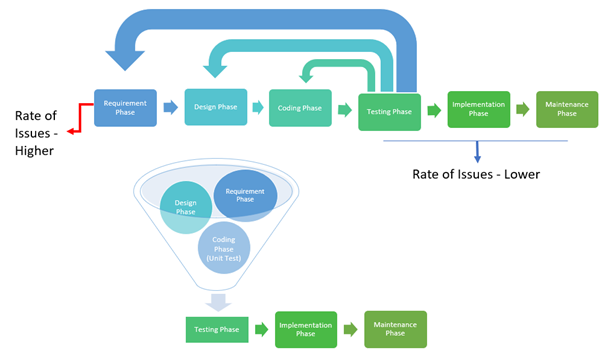- October 18, 2022
- Posted by: Kavitha PR
- Category: Digital Assurance

CRM, a phrase widely used across many businesses today, enables you to remain digitally connected in a secure environment to boost your productivity. Also known by its non-abbreviated form—Customer Relationship Management—CRM focuses on maintaining strong customer connections. Know Your Customer (KYC) is another CRM concept that beginners should understand.
Any developing organization must have major functional teams such as,
- Operational / Delivery
- Marketing
- Sales
- Service
Now that you have an inkling of the significance of CRM Testing, are you ready to transition your business to a digital mode?
Get in touch
CRM can effectively connect all these business functions and achieve several goals seamlessly. It has a communication facility to streamline all communications, such as sending welcome emails, alerts, reminders, announcements, warnings, and final notifications. It can record, report, document, assign, and analyze data between different modules. It can generate intelligence around customer data, which enables it to collect leads, convert them into business opportunities, and promptly transmit the business opportunity to the client. Thus, any business can efficiently achieve up-selling and cross-selling.
- A few classic examples of CRM Software are:
- Microsoft Dynamics CRM
- Salesforce
- SAP
- Zoho etc.
Significance of CRM Testing
A successful CRM system will provide a balanced relationship with a happy customer. Most companies keep their CRM software on-premises and in the cloud for easy access. CRM supports web, desktop, and mobile applications. Thus, digital assurance plays a crucial role in CRM testing, ensuring the system works as planned. Although CRM offers stress-free work, the mechanisms and workflows in CRM software are somewhat complex. Without testing, the system will not perform the intended tasks.
In the era of digital assurance solutions, every business focuses on quick delivery, fast response, and agile action plan to attract customers. A comprehensive CRM test should consider all these requirements and test software regularly. CRM testing includes functional and non-functional testing, automation and performance testing, and security and usability testing.
We need to test the CRM system for specific needs like contact/lead management, work management, document management etc. Additionally, entity customization, feature flags, form rules, user roles, reports, email sequences, dialogs and CWA workflows should also be checked. Not only that, but a CRM tester should also test a few other things based on their CRM settings. For example, let’s consider the time zone and currency. We can try time zone scenarios based on your system setting vs CRM’s time zone setting vs the time zone of the client’s location. A similar test can be performed for currency too.

Customization based on business needs is predominant in CRM. It’s easy to add a new feature or update an existing part through customization. The view can be altered in a user-friendly manner according to the customer’s preference. For example, if you need to add a new lookup field to a form or change a view, you can easily publish it via CRM customizations without new deployments. Businesses can choose features according to their needs and customize their CRM using custom properties and workflows. So, it is vital to test the CRM by creating custom entities.
Must read: Data Visualization Testing
CRM Testing Success Story by Indium’s Digital Assurance
Indium’s Digital Assurance Team provides CRM Testing Services by focusing on the below quality assurance practices and our proven best testing methodologies.
- Acceptance of CICD: We use a DevOps model for continuous production releases to meet market demands without compromising the quality and user experience. To accomplish effective digital transformation, the QA team collaborates with the product and development teams from the beginning for continuous integration and actively participates in all scrum calls to meet agility.
- Adopting Shift Left Testing: The magical formula of Shift Left Testing is “Prevention is better than Detection”, which spells out the project to prevent errors starting from the requirement and design phase. Here, the testing phase has been moved to the left side of the SDLC, as shown in fig (2), enabling our digital assurance team to engage and collaborate more responsibly with all stakeholders from an early stage. It provides a platform to share ideas, recommendations, and a clear understanding of the product. In this modern approach, the tough questions and suggestions in refinement discussions lead to amending the requirements and designs. As with our traditional method, we don’t want to wait until the software is available in our test environment to find them.

- Early Engagement: The functional team and our automation and performance teams are involved early in a project, starting with refinement to start the work via API before the code is deployed to the test environment. This helps identify the bugs early on and fix them sooner to set up good response timings for each module.
- In-Sprint Automation: This is one of the approaches where Digital Assurance is replacing traditional QA. In this digital era, both dev and test work together in the same sprint to achieve the sprint goal. The scrum team calls the testers developers.
For in-sprint automation, specific UI user stories are directly assigned to automation teams for automation without any intervention from the manual test team. This reduces time and cost and enables easier completion and quick regression of various phases, driving continuous delivery and improving ROI.
Our digital assurance team has an automation architecture focusing on code coverage and enabling automatic daily execution in the pipeline after each new build on the dedicated CI environments. Human testers are always required to do tasks that cannot be automated. Our manual crew completes the tasks throughout the sprint.
Check this out: Testing a bank application: A Success Story
- App Integration with Outlook / Teams: Our Digital Assurance team tests apps that integrate with other applications, which help users to stay focused, organized and connected with an all-in-one place.
- CRM Testing Checklist: As mentioned earlier in the figure, we monitor the checklist to verify the completeness of the test areas to ensure coverage. Before signing off, we ensure everything is marked as complete on the checklist.
- CRM Testing on Web, Desktop and Mobile Applications: From a digital assurance perspective, it is imperative to assess user experience across various digital channels like web, desktop, mobile, tablets, etc. Our experienced CRM QA professionals are experts in testing all these applications with their extensive domain knowledge in CRM Testing.




